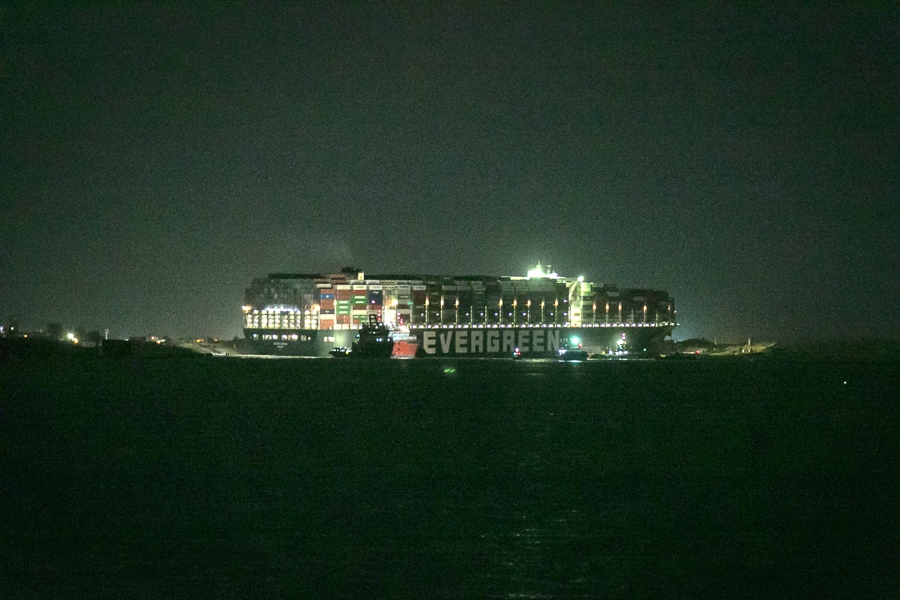
Clearing the Suez Canal took days. Figuring out the costs may take years
Cargo companies, insurers, government authorities and a phalanx of lawyers, all with different agendas and potential assessments, will not only need to determine the total damage but also what went wrong
 The Ever Given cargo ship stuck in the Suez Canal, off the coast of Egypt, March 27, 2021. Now freed, there will be finger-pointing and competing agendas as cargo companies, lawyers, insurers and government agencies try to sort out what went wrong when the Ever Given got stuck — and who must pay; Image: Sima Diab/The New York Times
The Ever Given cargo ship stuck in the Suez Canal, off the coast of Egypt, March 27, 2021. Now freed, there will be finger-pointing and competing agendas as cargo companies, lawyers, insurers and government agencies try to sort out what went wrong when the Ever Given got stuck — and who must pay; Image: Sima Diab/The New York Times
TOKYO — It took six days to prise free a giant container ship that ran aground and clogged the Suez Canal, one of the world’s most crucial shipping arteries. It could take years to sort out who will pay for the mess.
Cargo companies, insurers, government authorities and a phalanx of lawyers, all with different agendas and potential assessments, will not only need to determine the total damage but also what went wrong. When they eventually finish digging through the morass, the insurers of the ship’s Japanese owner are likely to bear the brunt of the financial pain.
The costs could add up quickly.
There are the repairs for any physical damage to the Ever Given, the quarter-mile-long ship that got stuck in the Suez. There is the bill for the tugboats and front-end loaders that dug the beached vessel out from the mud. The authority that operates the Suez Canal has already said the crisis has cost the Egyptian government up to $90 million in lost toll revenue as hundreds of ships waited to pass through the blocked waterway or took other routes.
And the stalled ship held up as much as $10 billion of cargo a day from moving through the canal, including cars, oil, livestock, laptops, sneakers, electronics and toilet paper. Companies delivering goods may have to pay customers for missed deadlines. If any agricultural goods went bad, producers may look to recoup lost revenue.
©2019 New York Times News Service







